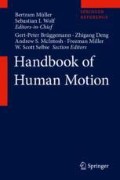Abstract
Excellence in dance arises due to a truly exceptional match between movements of all body parts of a dancer and is ruined by tiny imperfections and flaws in performance. We analyzed the technical canon of dance technique by using an analogy to the morphological subsystem of linguistics and described the very basic elements of any dance technique and its roots in human motion system – morphemes of human motor action as an analytic and pedagogic tool in dance. This definition led to a critical analysis of some aspects of traditional teaching methods and questions of attention focus and motor skill learning in dance completed by some relevant historical perspectives. In the biomechanical lab, the practical use of these specific morphological instructions was tested and proved by kinematic data of dancer’s performance while in jumps before and after corrections given by the author.
Finally the new concept Danamos – dance.art.master.system is described with its core, the seven basic motion morphemes of human motor action, its relevance to any artistic motion sequence, and the cooperation of mental and physical action.
References
Bläsing B et al (eds) (2010) The neurocognition of dance. Psychology Press, East Sussex
Cruse H, Schilling M (2010) Getting cognitive. In: Bläsing B et al (eds) The neurocognition of dance. Psychology Press, East Sussex, pp 53–74
Fischer S (1974) John Cranko über den Tanz. Fischer, Frankfurt am Main
Hossner E-J, Schiebl F, Göhner U (2015) A functional approach to movement analysis and error identification in sports and physical education. Front Psychol 6:1339. Bruxelles
Huschka S (2002) Moderner Tanz. Rowohlt, Hamburg
Krasnow D et al (2011) Biomechanical research in dance. Literature Review. York University, Toronto
McNevin NH, Wulf G (2002) Attentional focus on supra-postural tasks affects postural control. Human Movement science, 21,187–202
Steinkühler U, Cruse H, (1988) A holistic model for an internal representation to control the movement of a manipulator with redundant degrees of freedom. Biological Cybernetics, 79,457–466
Vaganova A (1980) Grundlagen des Klassischen Tanzes. 5th edn, russ., Iskusstwo, Leningrad-Moskau, p 88
Wulf G (2007) Attention and motor skill learning. Human Kinetics, Champaign, p 120, 121
Further Literature
Bläsing B, Puttke M, Schack T (2010) The Neurocognition of dance. Psychology Press, East Sussex
Merényi SL (1981) Methodik des klassischen Tanzes. 5. Auflage, dtsch, Henschelverlag, Berlin
von Laban R (1926) Choreographie. 1.Heft, dtsch, E. Diederichs, Jena
Acknowledgments
Translation by Jeremy Leslie-Spinks, MsC (Dance Science), ARAD Graphics by Marek Hertel, Berlin 2016, copyright by the authors Puttke/Volchenkov
Author information
Authors and Affiliations
Corresponding author
Section Editor information
Rights and permissions
Copyright information
© 2018 Springer International Publishing AG, part of Springer Nature
About this entry
Cite this entry
Puttke, M., Volchenkov, D. (2018). Motion Analysis as Pedagogic Tool in Dance. In: Handbook of Human Motion. Springer, Cham. https://doi.org/10.1007/978-3-319-14418-4_198
Download citation
DOI: https://doi.org/10.1007/978-3-319-14418-4_198
Published:
Publisher Name: Springer, Cham
Print ISBN: 978-3-319-14417-7
Online ISBN: 978-3-319-14418-4
eBook Packages: EngineeringReference Module Computer Science and Engineering

